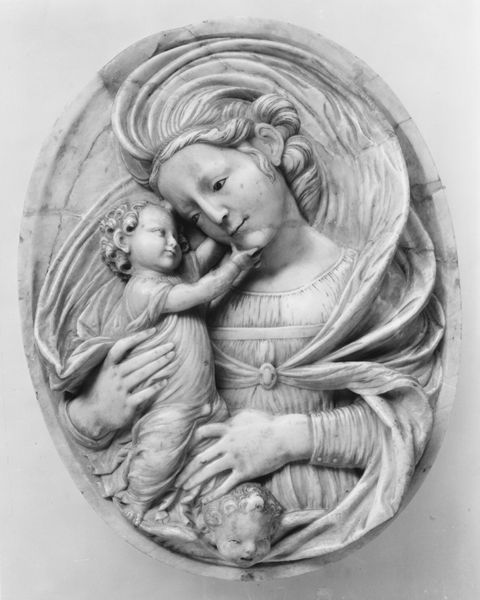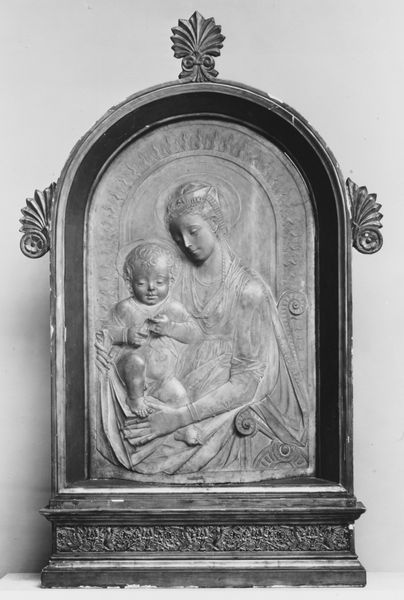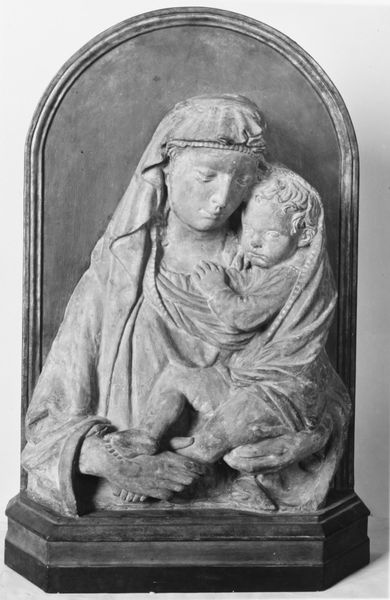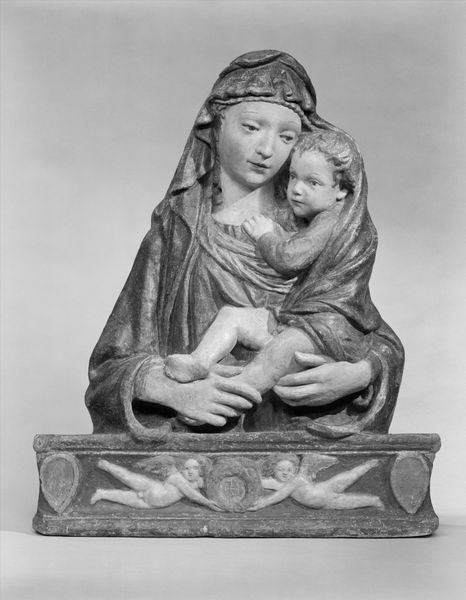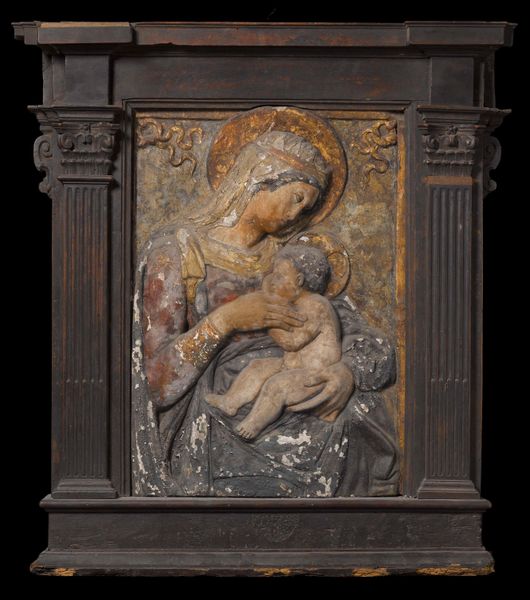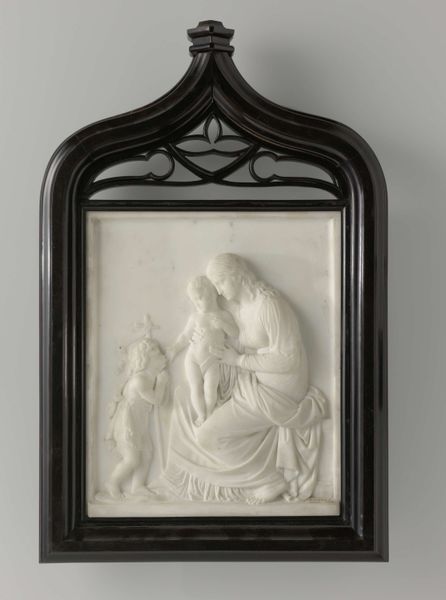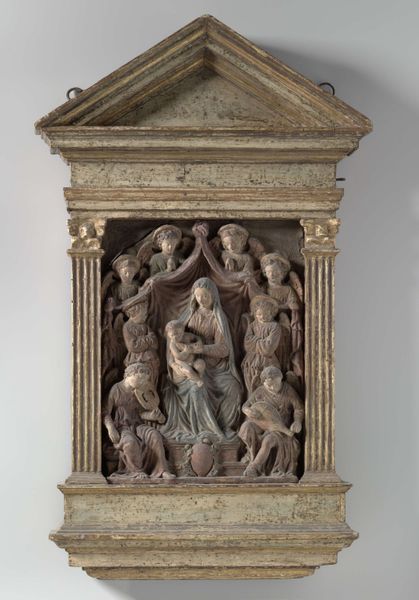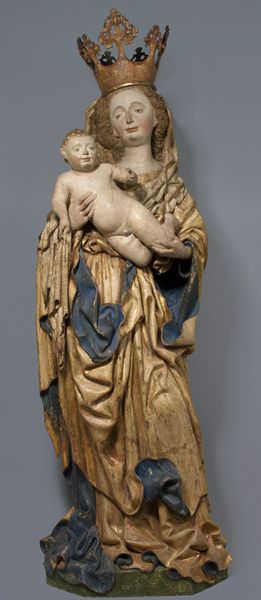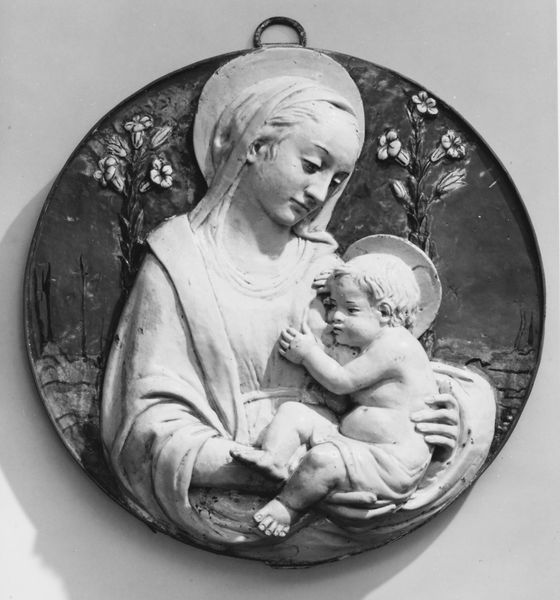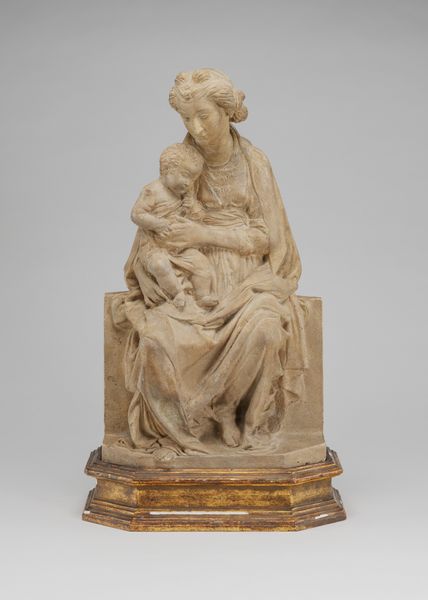
relief, sculpture, marble
#
portrait
#
sculpture
#
relief
#
figuration
#
sculpture
#
decorative-art
#
marble
#
italian-renaissance
Dimensions: Overall: 30 × 20 1/2 in. (76.2 × 52.1 cm)
Copyright: Public Domain
Donatello carved this "Madonna and Child" in Florence, Italy, sometime in the first half of the 15th century. Here, the Virgin Mary tenderly cradles the infant Jesus. During the Renaissance, religious art served a vital public role. It reinforced social values and communicated theological ideas to a largely illiterate population. Florentine artists like Donatello were supported by wealthy patrons, like the Medici family, and religious institutions. These powerful entities used art to project their status. Donatello was part of a new generation that looked back to classical antiquity for inspiration, which gave his sculptures a naturalistic feel. But the politics of religious imagery were complex. A seemingly conventional depiction of the Madonna and Child could also convey subtle messages about humanism, civic pride, or even social reform. Careful study of archival documents, patronage records, and theological treatises are necessary to understand the social role of art in Renaissance Florence. Ultimately, the meaning of Donatello’s sculpture lies not just in its aesthetic beauty, but also in its historical context.
Comments
No comments
Be the first to comment and join the conversation on the ultimate creative platform.
